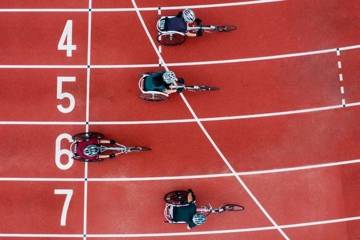
The Paralympic classification system: how does it work?
Thursday, 2 september 2021
The Paralympic classification system, which is complex, technical, yet extremely precise, is designed to allow for fair competition. Let us explain…
The Paralympic classification system, which is complex, technical, yet extremely precise, is designed to allow for fair competition. Let us explain…
As in Tokyo, the Paralympic Games Paris 2024 will be hosting 22 Paralympic sports and more than 500 events in categories with titles as diverse as T54, SM13, B class or PTS5… but why? According to the International Olympic Committee: “The classification system has been put in place to minimize the impact of impairments on sport performance and to ensure the success of an athlete is determined by skill, fitness, power, endurance, tactical ability and mental focus.” Based on the impact of the disability on performance (and not the disability itself), the system determines who can take part in the competition, and groups the athletes according to their activity limitations. As a result, athletes with different disabilities can compete together if they have an equal degree of functional ability.
Athletes are examined by specialized medical and technical personnel and divided into three main categories: athletes with physical impairments; athletes who are visually impaired or blind; and athletes with mental or psychological impairments, who also meet a specific list of 10 disabilities*. Athletes who are deaf or hard of hearing are not included in this classification; they have their own competition known as the Deaflympics that will next be held in Brazil in May 2022.
Based on this classification system, each international federation draws up and maintains its own system (a fact that explains the multiplicity of classes). For each sport (represented by its initial in English), a ‘coefficient’ is assigned to the event; the smaller the number, the greater the handicap.
* Impaired muscle power / Impaired passive range of movement / Limb deficiency / Leg length difference / Short stature / Muscle tension / Uncoordinated movement / Involuntary movements / Vision impairment / Intellectual Impairment.
For further details, watch the educational videos made available by the French Paralympic & Sports Committee: Sitting volleyball – YouTube